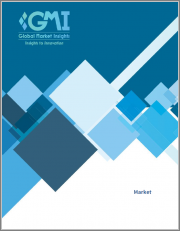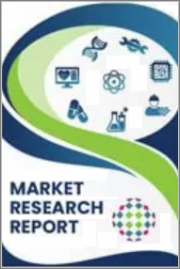
|
시장보고서
상품코드
1351517
세계의 의료기기 상환 시장 : 지불자별, 의료 환경별, 지역별 예측(2023-2032년)Medical Devices Reimbursement Market - By Payer (Public, Private), By Healthcare Setting (Hospitals, Outpatient Facilities) & Forecast, 2023 - 2032 |
||||||
세계의 의료기기 상환(Medical Devices Reimbursement) 시장 규모는 일부 경제권에서 바람직한 규제환경에 따라 2023년부터 2032년에 걸쳐 7.3%의 CAGR로 추이하며 성장 할 것으로 예상됩니다.
규제 상황은 의료기기 상환에 큰 영향을 미칩니다. 미국의 FDA와 유럽의 유럽 의약청(EMA)과 같은 정부 기관은 의료기기의 승인과 상환 경로를 수립하고 있습니다.
승인 절차, 라벨링 요건, 시판 후 감시를 포함한 규정의 변화는 기기 제조업체의 환급 전략에 직접적인 영향을 미쳐 시장 성장과 발전을 이끌 수 있습니다. 예를 들어, 2023년 7월부터 프랑스의 원격 환자 모니터링 및 디지털 치료용 디지털 기기는 독일의 DiGA 프로그램과 유사한 절차에 따라 신속 액세스 및 환급을 받을 수 있게 되었다고 프랑스 보건부 루이자 스투베(Louisa Stuwe)가 언급했습니다.
의료기기 상환 시장 전체는 지불자, 의료 환경, 지역에 따라 구분됩니다.
민간 지불자는 더 많은 유연성과 맞춤형 보장 옵션을 제공할 수 있기 때문에 2023년부터 2032년까지 7%의 CAGR로 추이하며 성장 할 것으로 예상되며, 2032년까지 의료기기 상환 시장 점유율을 장악할 수 있습니다. 엄격한 규제와 제한된 예산이 적용되는 정부 지원 프로그램과 달리 민간 보험사는 새로운 기술과 치료법에 빠르게 적응할 수 있습니다. 이러한 적응력은 포괄적인 보장을 원하는 환자와 빠른 환급 절차를 원하는 기기 제조업체 모두를 끌어들여 의료기기 상환 환경에서 민간 보험사의 참여가 급증하는 원동력이 되고 있습니다.
의료기기 상환 산업의 외래 환자 시설 부문은 2032년까지 7.9%의 CAGR로 추이하며 성장 할 것으로 예상됩니다. 외래 환자 환경에서 최소 침습적인 첨단 시술을 제공하는 추세가 증가함에 따라 환급 가능한 의료 기기에 대한 수요가 증가하고 있습니다. 또한 외래 환자 시설은 병원보다 비용 효율적이기 때문에 환자와 지불자 모두에게 매력적인 옵션입니다. 결과적으로 외래 진료에 대한 수요가 증가함에 따라 이러한 진화하는 의료 서비스 제공 모델을 지원하기 위한 의료기기 상환 솔루션의 필요성이 커지고 있습니다.
유럽의 의료기기 상환 산업은 2023년부터 2032년에 걸쳐 7%의 CAGR로 추이하며 성장 할 것으로 예상됩니다. 의료 지출 증가, 노화, 만성 질환의 확산은 혁신적인 의료 기술에 대한 수요를 촉진하고 있습니다. 또한 유럽 정부는 최첨단 의료기기에 대한 접근을 용이하게 하기 위해 상환 정책을 개혁하고 있습니다. 또한 디지털 건강 솔루션의 성장과 가치를 기반으로 하는 케어 모델의 중요성은 유럽 전역에서 의료기기 상환 분야의 확대에 기여하고 있습니다.
목차
제1장 조사 방법
- 산업 커버리지
- 시장 범위와 정의
- 기본 추정과 작업
- 데이터 수집
- 예측 파라미터
- COVID-19의 영향
- 데이터 검증
- 데이터 소스
- 1차
- 2차
- 유료 소스
- 무료 소스
제2장 주요 요약
제3장 의료기기 상환 산업 고찰
- 생태계 분석
- 산업에 미치는 영향 요인
- 성장 촉진 요인
- 다양한 만성 질환 증가
- 고령화 인구 증가
- 의료비용 부담 증가
- 정부에 의한 지원 프로그램
- 산업의 잠재적 위험 및 과제
- 복잡한 틀
- 한정된 보험 적용 범위와 상환 시설
- 성장 촉진 요인
- 성장 가능성 분석
- 지불자별
- 의료 환경별
- COVID-19의 영향 분석
- 규제 상황
- 기술 상황
- 향후 시장 동향
- 정책 이니셔티브
- Porter's Five Forces 분석
- PESTEL 분석
제4장 경쟁 구도
- 소개
- 기업 매트릭스 분석
- 경쟁 포지셔닝 매트릭스
- 벤더 매트릭스 분석
- 기업 점유율 분석
- 전략 대시보드
제5장 의료기기 상환 시장 규모 및 예측 : 지불자별
- 주요 동향
- 공적
- 민간
제6장 의료기기 상환 시장 규모 및 예측 : 의료 환경별
- 주요 동향
- 병원
- 외래환자시설
- 기타
제7장 의료기기 상환 시장 규모 및 예측 : 지역별
- 주요 동향
- 북미
- 미국
- 캐나다
- 유럽
- 독일
- 영국
- 프랑스
- 스페인
- 이탈리아
- 폴란드
- 스웨덴
- 네덜란드
- 아시아 태평양
- 중국
- 일본
- 인도
- 호주
- 한국
- 인도네시아
- 필리핀
- 베트남
- 남미
- 브라질
- 멕시코
- 아르헨티나
- 콜롬비아
- 칠레
- 페루
- MEA
- 남아프리카공화국
- 사우디아라비아
- 아랍에미리트(UAE)
- 터키
- 이스라엘
- 이란
제8장 기업 개요
- CVS Health
- BNP Paribas
- Aviva
- Cigna
- United Health Group
- Allianz
- Aetna
- Humana Inc.
- WellCare Health Plans, Inc.
- Nippon Life Insurance Company
- Anthem Insurance Companies, Inc.
Global Medical Devices Reimbursement Market size will expand at 7.3% CAGR between 2023 and 2032, driven by the favorable regulatory environment across several economies. The regulatory landscape significantly impacts medical device reimbursement. Government agencies, such as the FDA in the United States and the European Medicines Agency (EMA) in Europe, establish the approval and reimbursement pathways for medical devices.
Changes in regulations, including the approval process, labeling requirements, and post-market surveillance, can directly impact reimbursement strategies for device manufacturers, leading to market growth and development. For instance, in July 2023, digital devices for remote patient monitoring and digital therapeutics in France are now eligible for expedited access and reimbursement, a process that bears similarities to Germany's DiGA program, as stated by Louisa Stuwe from the French Ministry of Health.
The overall medical devices reimbursement market is segregated based on payer, healthcare setting, and region.
Private payers could register a 7% CAGR from 2023 to 2032 and dominate the medical devices reimbursement market share by 2032 due to their ability to offer more flexibility and customized coverage options. Unlike government-funded programs that often have stringent regulations and limited budgets, private payers can adapt quickly to new technologies and therapies. This adaptability attracts both patients seeking comprehensive coverage and device manufacturers looking for faster reimbursement processes, driving the surge in private payer participation within the medical device reimbursement landscape.
The outpatient facilities segment of the medical devices reimbursement industry could expand at 7.9% CAGR through 2032. There is a growing trend toward providing advanced, minimally invasive procedures in outpatient settings, increasing the need for reimbursable medical devices. Additionally, outpatient facilities are more cost-effective than hospitals, making them an attractive option for both patients and payers. As a result, the increasing demand for outpatient care is fueling the need for medical device reimbursement solutions to support these evolving healthcare delivery models.
Europe medical device reimbursement industry will exhibit a 7% growth rate throughout 2023-2032. Rising healthcare expenditures, an aging population, and the increasing prevalence of chronic diseases are driving demand for innovative medical technologies. European governments are also reforming reimbursement policies to facilitate access to cutting-edge medical devices. Furthermore, the growth of digital health solutions and greater emphasis on value-based care models are contributing to the expansion of the medical device reimbursement sector across Europe.
Table of Contents
Chapter 1 Methodology
- 1.1 Industry coverage
- 1.2 Market scope & definitions
- 1.3 Base estimates & working
- 1.3.1 Data collection
- 1.4 Forecast parameters
- 1.5 COVID-19 impact at global level
- 1.6 Data validation
- 1.7 Data sources
- 1.7.1 Primary
- 1.7.2 Secondary
- 1.7.2.1 Paid sources
- 1.7.2.2 Unpaid sources
Chapter 2 Executive Summary
- 2.1 Medical devices reimbursement industry 360 degree synopsis, 2018 - 2032
- 2.1.1 Business trends
- 2.1.2 Regional trends
- 2.1.3 Payer trends
- 2.1.4 Healthcare setting trends
Chapter 3 Medical Devices Reimbursement Industry Insights
- 3.1 Industry ecosystem analysis
- 3.2 Industry impact forces
- 3.2.1 Growth drivers
- 3.2.1.1 Increasing prevalence of various chronic diseases
- 3.2.1.2 Rising aging population
- 3.2.1.3 Growing burden of healthcare cost
- 3.2.1.4 Supportive government programs
- 3.2.2 Industry pitfalls & challenges
- 3.2.2.1 Complex framework
- 3.2.2.2 Limited coverage and reimbursement facilities
- 3.2.1 Growth drivers
- 3.3 Growth potential analysis
- 3.3.1 By payer
- 3.3.2 By healthcare setting
- 3.4 COVID-19 impact analysis
- 3.5 Regulatory landscape
- 3.5.1 North America
- 3.5.2 Europe
- 3.5.3 Asia Pacific
- 3.5.4 Latin America
- 3.5.5 MEA
- 3.6 Technology landscape
- 3.7 Future market trends
- 3.8 Policy initiatives
- 3.9 Porter's analysis
- 3.10 PESTEL analysis
Chapter 4 Competitive Landscape, 2022
- 4.1 Introduction
- 4.2 Company matrix analysis, 2022
- 4.3 Competitive positioning matrix
- 4.4 Vendor matrix analysis
- 4.5 Company market share analysis, 2022
- 4.6 Strategy dashboard, 2022
Chapter 5 Medical Devices Reimbursement Market Size and Forecast, By Payer (USD Billion)
- 5.1 Key payer trends
- 5.2 Public
- 5.3 Private
Chapter 6 Medical Devices Reimbursement Market Size and Forecast, By Healthcare Setting (USD Billion)
- 6.1 Key healthcare setting trends
- 6.2 Hospitals
- 6.3 Outpatient facilities
- 6.4 Others
Chapter 7 Medical Devices Reimbursement Market Size and Forecast, By Region (USD Billion)
- 7.1 Key regional trends
- 7.2 North America
- 7.2.1 U.S.
- 7.2.2 Canada
- 7.3 Europe
- 7.3.1 Germany
- 7.3.2 UK
- 7.3.3 France
- 7.3.4 Spain
- 7.3.5 Italy
- 7.3.6 Poland
- 7.3.7 Sweden
- 7.3.8 The Netherlands
- 7.4 Asia Pacific
- 7.4.1 China
- 7.4.2 Japan
- 7.4.3 India
- 7.4.4 Australia
- 7.4.5 South Korea
- 7.4.6 Indonesia
- 7.4.7 Philippines
- 7.4.8 Vietnam
- 7.5 Latin America
- 7.5.1 Brazil
- 7.5.2 Mexico
- 7.5.3 Argentina
- 7.5.4 Columbia
- 7.5.5 Chile
- 7.5.6 Peru
- 7.6 MEA
- 7.6.1 South Africa
- 7.6.2 Saudi Arabia
- 7.6.3 UAE
- 7.6.4 Turkey
- 7.6.5 Israel
- 7.6.6 Iran
Chapter 8 Company Profiles
- 8.1 CVS Health
- 8.2 BNP Paribas
- 8.3 Aviva
- 8.4 Cigna
- 8.5 United Health Group
- 8.6 Allianz
- 8.7 Aetna
- 8.8 Humana Inc.
- 8.9 WellCare Health Plans, Inc.
- 8.10 Nippon Life Insurance Company
- 8.11 Anthem Insurance Companies, Inc.














